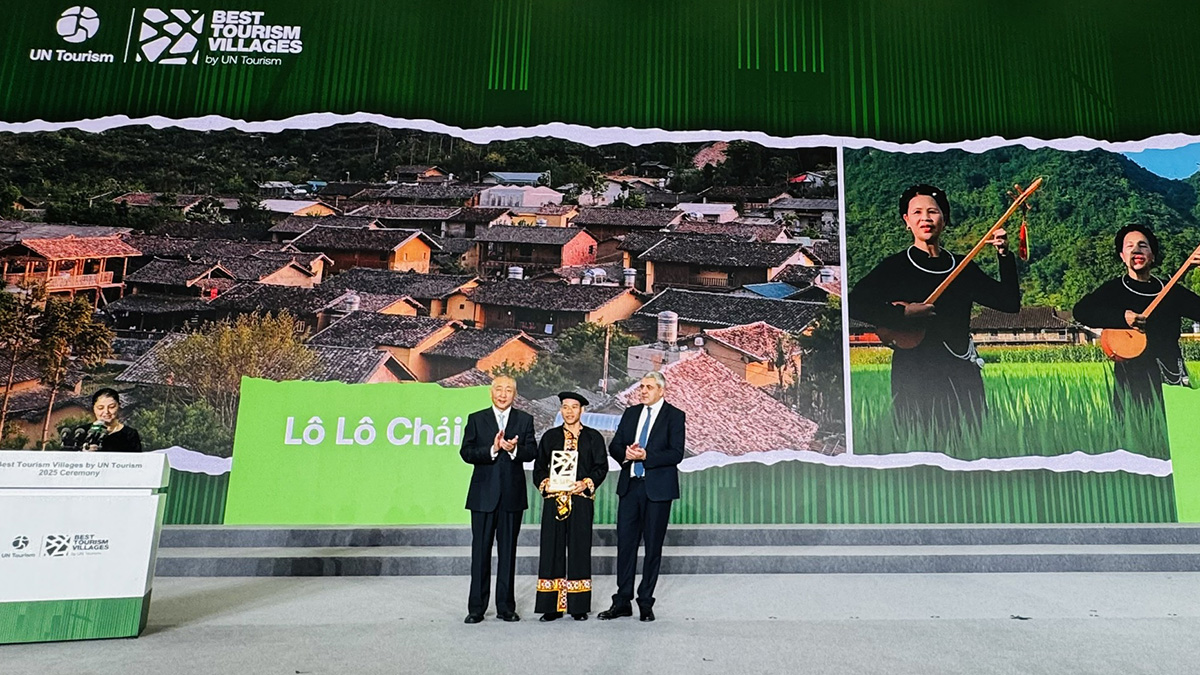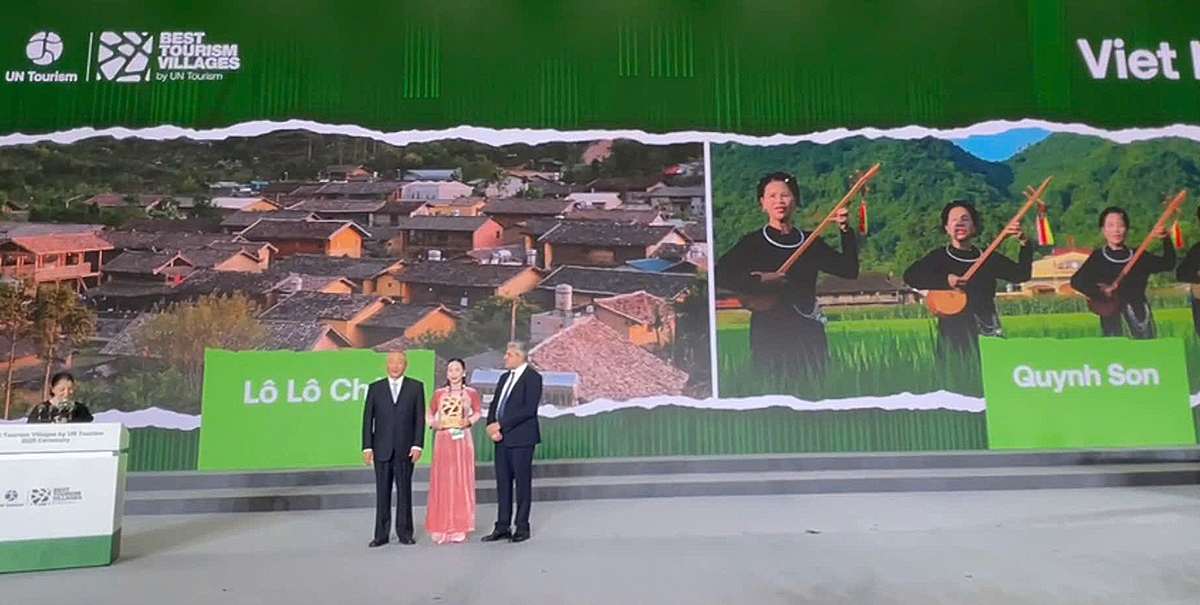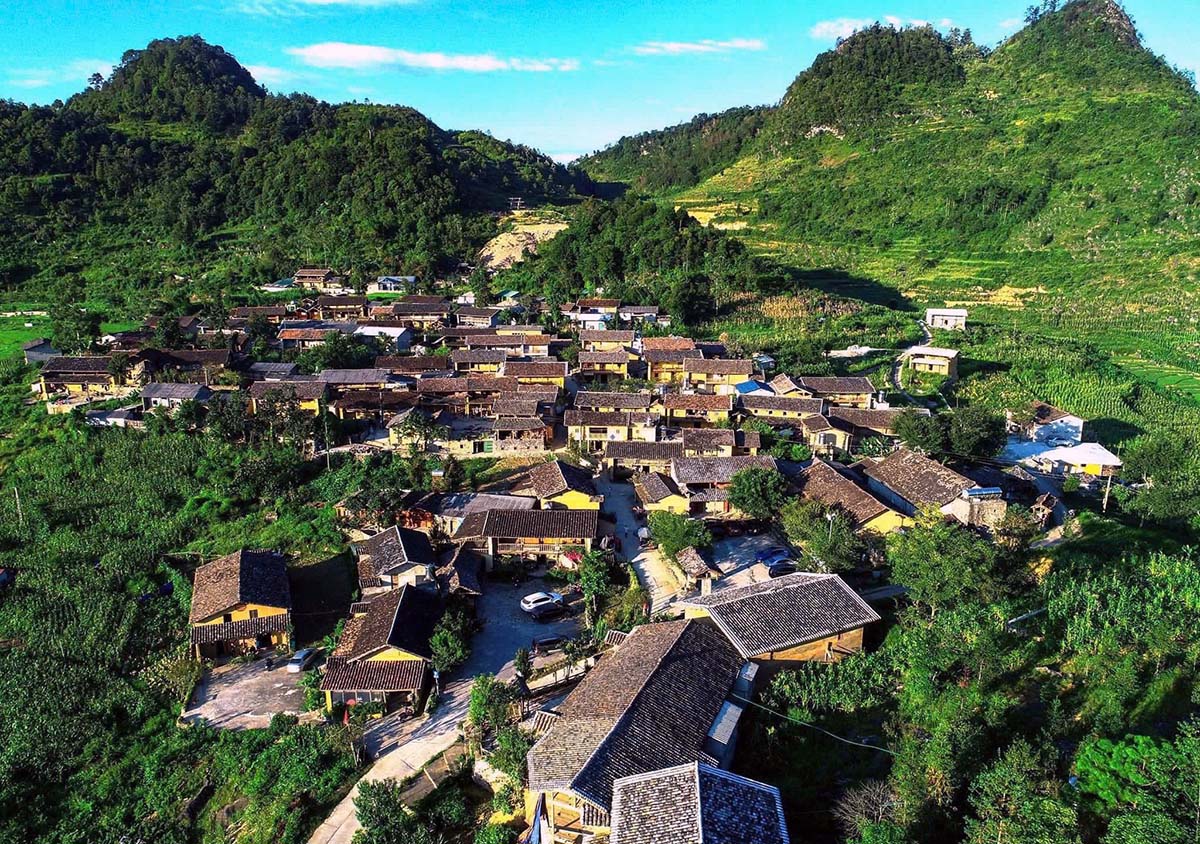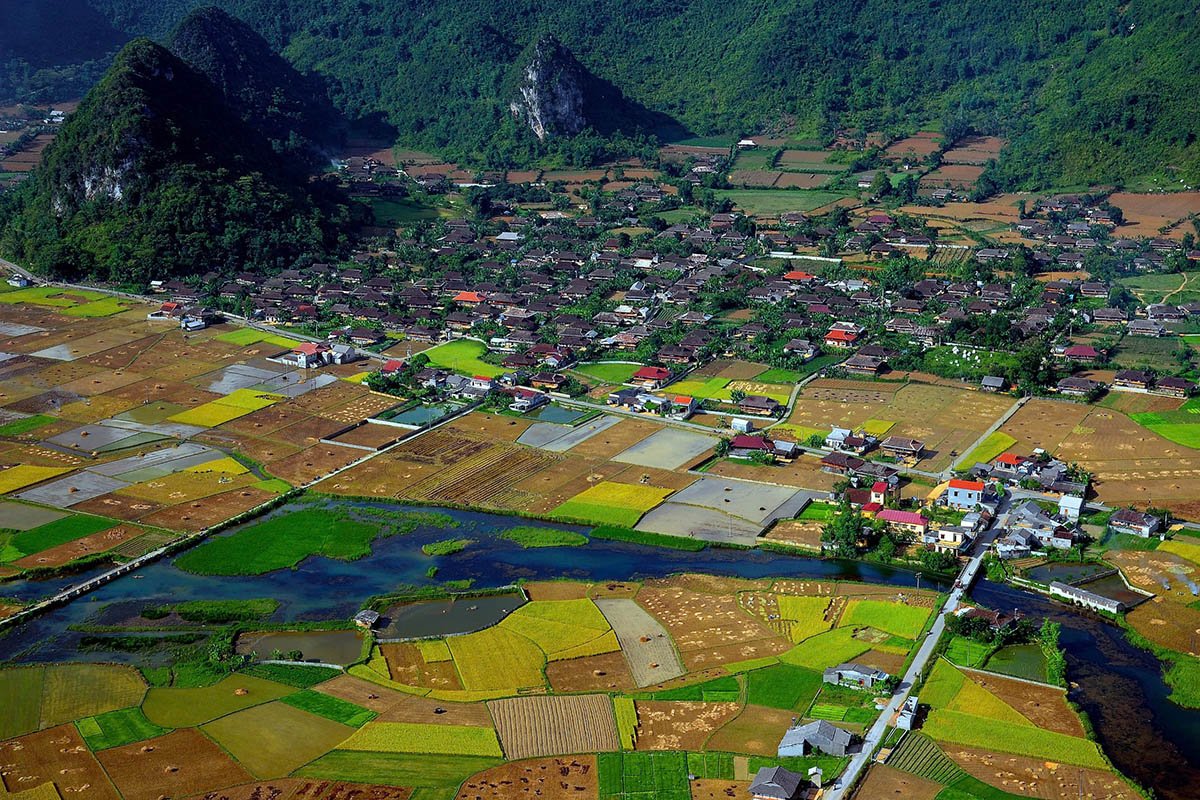This prestigious recognition not only highlights the global appeal of Vietnam’s rural tourism destinations but also affirms the country’s commitment to promoting community-led, sustainable development that harmonizes economic growth with environmental protection and cultural heritage conservation.
Best Tourism Villages: A Global Initiative for Sustainable Rural Development
Launched by UN Tourism, the Best Tourism Villages initiative honors rural destinations that exemplify innovative tourism practices rooted in sustainability, cultural heritage protection, and local economic empowerment. The selected villages must showcase their ability to preserve traditional livelihoods, promote biodiversity, and safeguard their natural landscapes, while offering meaningful tourism experiences that support the United Nations’ Sustainable Development Goals (SDGs).
In 2025, over 270 applications from 65 countries were submitted for consideration. Through a highly competitive evaluation process, Lô Lô Chải and Quỳnh Sơn stood out as exemplary models of how tourism can positively transform rural communities without compromising their unique identities and natural environments.


Lô Lô Chải Village - A Hidden Gem of Cultural Identity
Nestled in Lũng Cú Commune, Tuyên Quang Province, Lô Lô Chải Village is home to the Lô Lô ethnic minority group. Perched in the mountainous highlands near the northernmost point of Vietnam, the village enchants visitors with its untouched natural scenery, traditional earthen houses with yin-yang tiled roofs, and a vibrant culture preserved through festivals, crafts, and attire.
The Lô Lô people have maintained their distinct identity for generations, showcasing rich traditions through colorful brocade weaving, ancestral rituals, and culinary customs. The community has embraced community-based tourism as a tool for cultural preservation and socio-economic development. Visitors to Lô Lô Chải can enjoy immersive experiences such as participating in local festivals, cooking traditional dishes, and staying in family-run homestays that offer authentic insights into highland life.
By promoting tourism that is respectful of nature and culture, the villagers have successfully protected their heritage while creating new income opportunities and reducing migration pressures among the younger population

Lô Lô Chải Village in Tuyên Quang Province
Quỳnh Sơn Village - A Model for Community-based Tourism in Northeast Vietnam
Located in Bắc Sơn Commune, Lạng Sơn Province, Quỳnh Sơn Village lies within the Special National Relic Site of the Bắc Sơn Uprising and forms part of the Lạng Sơn UNESCO Global Geopark. It is inhabited predominantly by the Tày ethnic group, who continue to uphold their rich cultural traditions in daily life.
Surrounded by lush valleys and majestic mountains, Quỳnh Sơn offers visitors a serene and authentic rural experience. Tourists can stay in traditional stilt houses, participate in agricultural activities, learn how to weave brocade, and enjoy local delicacies made from indigenous ingredients. The village also hosts seasonal festivals, folk singing, and cultural exchanges that allow visitors to connect with the community on a deeper level.
What makes Quỳnh Sơn exceptional is the systematic and inclusive approach to developing tourism. Local authorities, residents, and tour operators have worked together to design tourism programs that not only generate income but also protect the area’s natural ecosystems and cultural assets. This collaborative model ensures that tourism remains a tool for empowerment, not exploitation.

Quỳnh Sơn Community-based Tourism Village in Lạng Sơn Province
Vietnam’s Growing Reputation in Rural Tourism
With Lô Lô Chải and Quỳnh Sơn joining the list, Vietnam now has five villages recognized by UN Tourism under the Best Tourism Villages program. The others include:
- Tân Hóa Village (Quảng Bình Province): Famous for its adventure and cave tourism.
- Thái Hải Village (Thái Nguyên Province): Known for preserving the traditional lifestyle of the Tày ethnic people.
- Trà Quế Vegetable Village (Đà Nẵng City): A model of eco-friendly agricultural tourism.
This growing list reflects Vietnam’s strategic focus on developing rural and community-based tourism that aligns with the nation’s broader goals of sustainable development and poverty alleviation. Government support, combined with grassroots participation, has played a crucial role in transforming remote villages into vibrant cultural destinations.
A Global Recognition and Future Opportunities
Being named among the “Best Tourism Villages” by UN Tourism not only enhances the visibility of Lô Lô Chải and Quỳnh Sơn on the global tourism map but also brings long-term benefits. These villages will receive technical support and capacity-building assistance from UN Tourism, helping them further improve tourism infrastructure, promote sustainable practices, and build resilience against external shocks such as climate change or global economic fluctuations.
More importantly, this recognition serves as a powerful inspiration for other rural communities across Vietnam. It demonstrates that with the right vision and local engagement, even remote villages can become models of sustainable tourism, attract international visitors, and preserve their unique cultural heritage for generations to come.
The recognition of Lô Lô Chải and Quỳnh Sơn as “Best Tourism Villages 2025” is more than an award - it is a testament to Vietnam’s growing success in blending tradition with innovation, heritage with development, and tourism with sustainability. As the country continues to invest in inclusive rural tourism, these two villages stand as shining examples of how tourism, when managed responsibly, can become a catalyst for community pride, resilience, and prosperity.
Tourism Information Technology Center